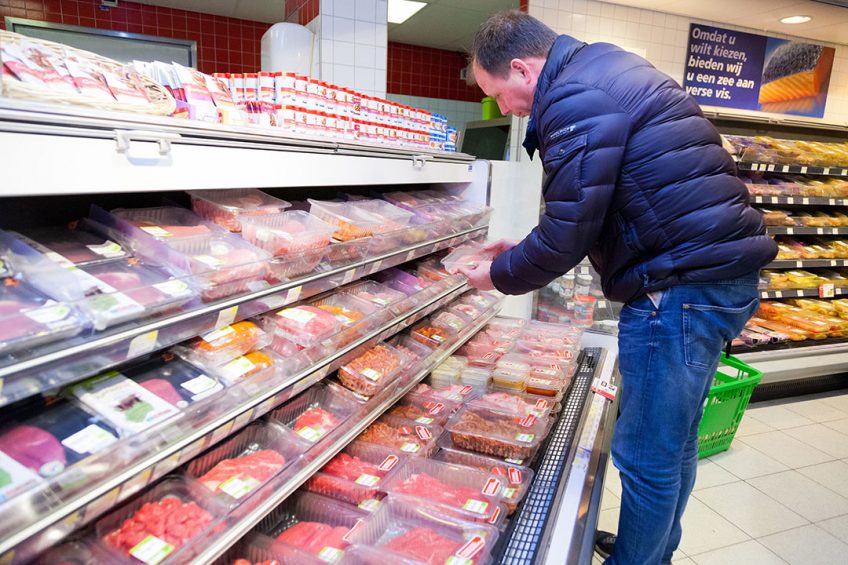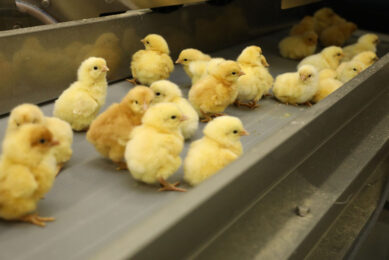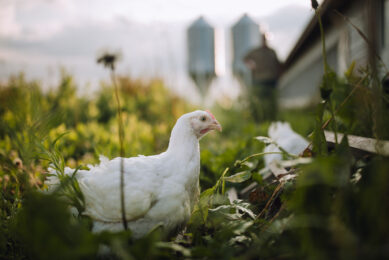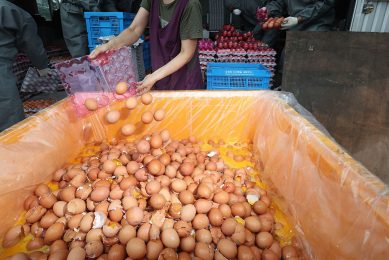Chicken buyers most open to meat alternatives

Poultry farmers are facing increasing pressure from vegetarians and vegans, particularly among the health and environmentally-aware younger generation. Poultry World looks at the issues and the response of the poultry sector.
Consumers from all but 3 countries in the world (North Korea, Vatican City and Eswatini (Swaziland)) signed up to the Veganuary movement this year. More than 400,000 people pledged to eat a purely vegan diet during January, marking a considerable rise on figures for the previous two years (250,000 in 2019 and 170,000 in 2018). This has led supermarkets and manufacturers, as well as restaurants and UK pub chains to tap in to the vegan sector and the growing number of ‘flexitarians’ who still enjoy meat but want to reduce their consumption levels. Fast food chicken restaurant KFC, for example, included its first Veganuary offerings, selling one million vegan burgers globally during the same month. The UK-based Marks & Spencer retailer said its vegan chicken pieces sold at a rate of 4 every minute while Tesco supermarkets reported that sales of Hellmann’s vegan mayonnaise soared by nearly 400% during January 2020.
Increasing number of consumers turn to veganism
Retail insight company Kantar said it was clear that UK retailers were prepared for an increasing number of consumers to turn to vegan foods. Co-op food retailer launched its new product line ‘Gro’, while the Asda supermarket chain promoted its ‘Plant Based’ foods. It reported that more than twice as many consumers bought one of its explicitly labelled plant-based products in January compared with the festivity-filled month of December 2019.
Estimates show that anything from 3-10% of the population are non-meat eaters.”
Reasons why consumers move to veganism
But what are the reasons for people getting involved in Veganuary? Health was cited by nearly 42% of participants, followed by environmental concerns (28%) and ethical reasons (27%). Nearly half the people giving up meat and dairy in January did so because they perceive it as a healthy choice. However, the plant-based food boom is not primarily caused by a rise in the number of people following strict vegan diets – vegans still make up only 2% of the population. Instead the trend is being driven by many people making small changes and trying to eat more plant-based meals.
 Australia’s changing landscape of protein production
Australia’s changing landscape of protein production
Animal agriculture is under increased scrutiny due to perceptions about the health, environmental and welfare aspects of animal-sourced protein. These institutional risks are driving industry change.
3-10% of population non-meat eaters
Paul Kelly, managing director of UK-based FarmGate Hatcheries, admitted that vegetarian and vegan diets were on the increase among the younger generation and students. But he felt that other environmental issues perhaps loomed larger. Writing to the hatchery’s poultry customers, Kelly said: “Estimates show that anything from 3-10% of the population are non-meat eaters. I do not think this will affect the top end of the market as the decision maker on Christmas lunch tends to be from the older generation. Turkey will continue to take centre stage – with a nut roast alongside.”
“Plastic and non-recyclable packaging is a ‘big no’ and I believe will become a major issue very quickly,” he added. Whole birds continue to dominate Kelly Turkeys’ own sales – remaining at 72% of FarmGate sales over the past 4 years. FarmGate sales were up by 8.5% and online sales by 7.5%, with the move to ordering from smart phones and tablets rising dramatically. Late orders – after 14 December – made up 12% of sales.
 Research looks at ‘forest chicken’ for animal welfare
Research looks at ‘forest chicken’ for animal welfare
The University of São Paulo (USP) has done research into the viability of a so called agroforestry system. The goal is to produce chickens inside a “forest” in order to increase the welfare level and to reintroduce the bird to its ‘natural environment’.
Chicken checks more boxes with consumers
A study commissioned by the US National Chicken Council and conducted by IRI last July found that while the future of chicken and protein was bright, companies and retailers need to keep changing in order to satisfy modern shoppers. The study, which involved 780 interviews, found that chicken checked more boxes than beef, pork and fish in terms of its taste, health, versatility, family appeal, price value, absence of antibiotics and convenience. It only lost out to plant-based foods on sustainability grounds. Chicken in the US, and indeed most parts of the world, continues to boom. Since 1960, per capita consumption in the US has grown more than threefold to 94 lbs (42 kg) – outperforming all other major proteins, particularly pork.
There won’t be factory farms or abattoirs in 2050. There will be some heritage breed farms and slaughterhouses where animals are treated well. But it will be a limited market.”
Convenience products
Speaking at last summer’s Chicken Marketing Summit in South Carolina, US, Chris Dubois, senior vice-president and principal at IRI, highlighted the categories that had driven most of the meat growth in the previous year (US$ 100m+). Chicken and turkey took 5 of the 8 categories with stir fry/Fajita cuts (+14%) and ground chicken (+12%) leading the way. Convenient products dominated the market, meaning that while sales of fresh chicken breast had risen by US$ 1.3 billion since 2013, fresh whole chicken sales have fallen by US$ 200 million in the same period. Dubois highlighted how the ‘no antibiotics’ strategy continues to play well with US consumers, among whom 35% said that ‘free of antibiotics’ was important to them when they went fresh food shopping. Organics are also doing well in the US with a 5th of consumers saying it’s a key issue for them. But even in the US, the percentage of households buying chicken and turkey is declining – down by nearly half a percentage point to 92% for chicken and by a third of a point to 60% for turkey.
Among those who do not currently consume plant-based protein, chicken buyers are most open to consuming this type of protein (20%). More than 5 in 10 said their ideal meals would consist of more plant-based foods. In reality, however, fewer than 10% of buyers of each meat protein had purchased plant-based foods in the past 6 months. While the growth of plant-based protein is small, its development could create headwinds for animal protein producers and meat producers. Dubois noted the need to introduce blended options to satisfy this craving. Others think that the plant-based meat that is already here – the Beyond Burger and the Impossible Burger – will become more widely available. Bruce Friedrich of the Good Food Institute, which works to develop alternatives to meat, predicts a widening of the consumer products on offer. Speaking to the Guardian newspaper, he said: “We’ll have plant-based meat that doesn’t exist yet, whether it’s pork chops, steaks, tuna or salmon.”
Future of meat based protein
Whether plant-based or lab-based meat (also referred to as cultivated meat) takes off remains to be seen. US start-up JUST has created chicken nuggets in a bioreactor and scientists at the University of Bath are growing bacon on blades of grass. Statistics don’t at present support any massive change in the protein rich poultry sector by 2050. But Friedrich, at one end of the spectrum, believes otherwise: “There won’t be factory farms or abattoirs in 2050. There will be some heritage breed farms and slaughterhouses where animals are treated well. But it will be a limited market.”
 Beheer
Beheer








 WP Admin
WP Admin  Bewerk bericht
Bewerk bericht